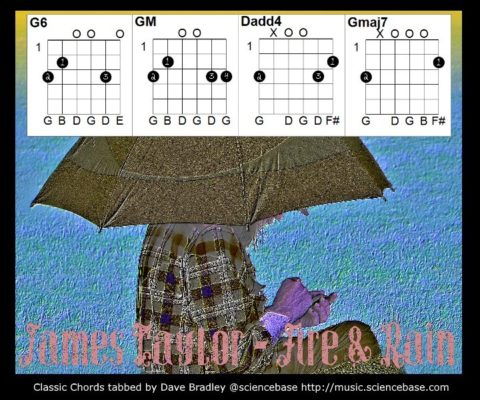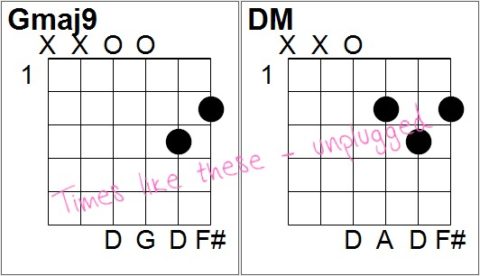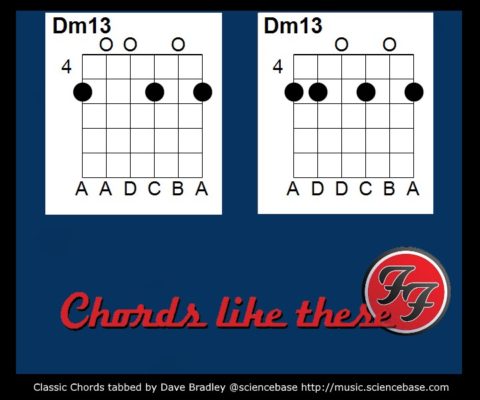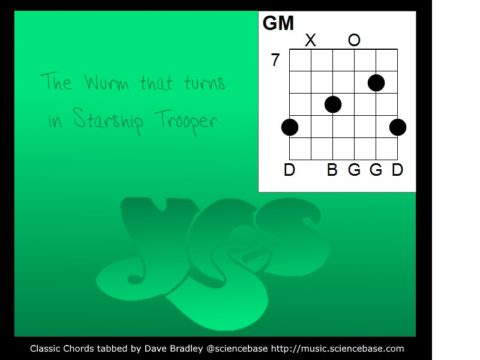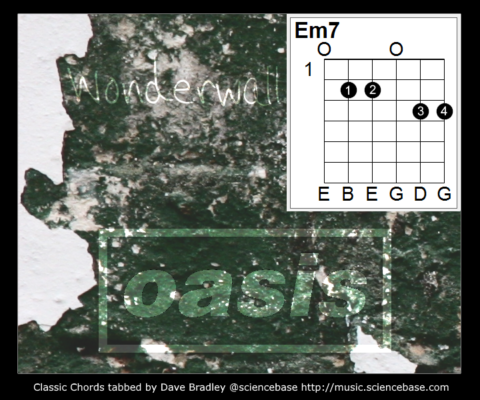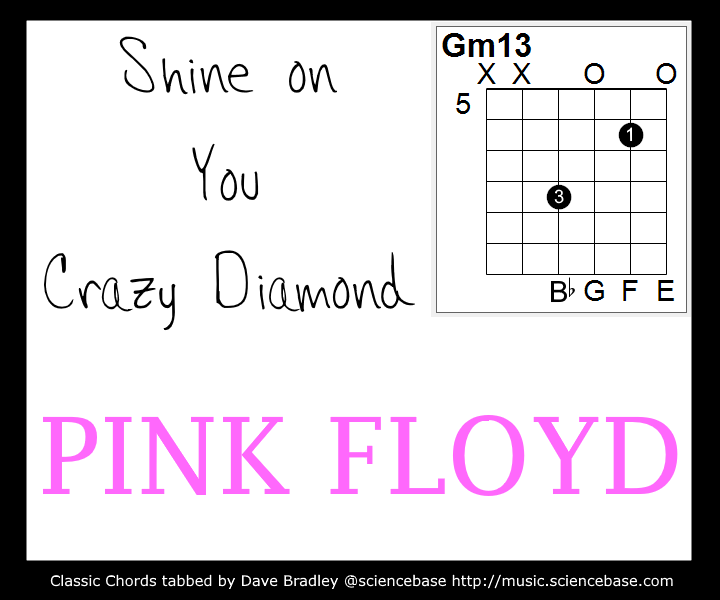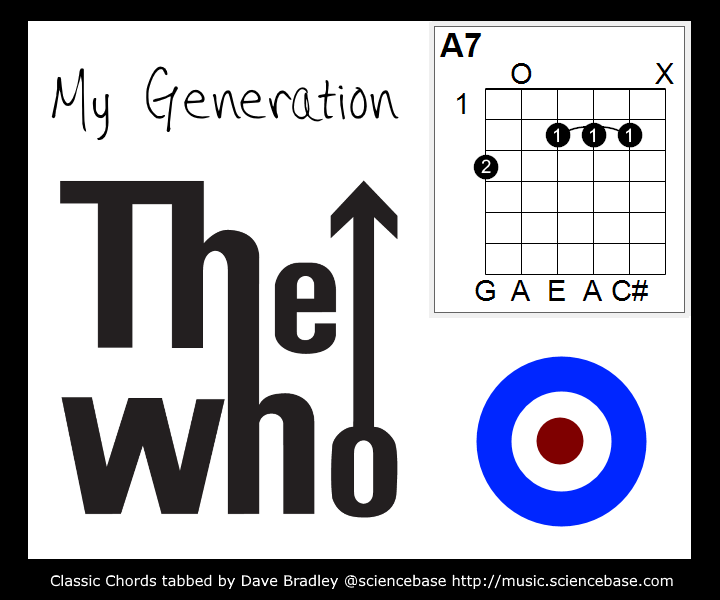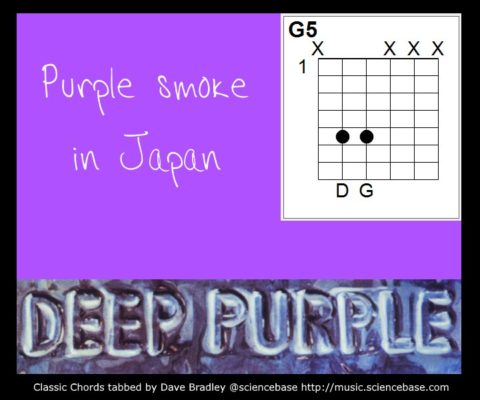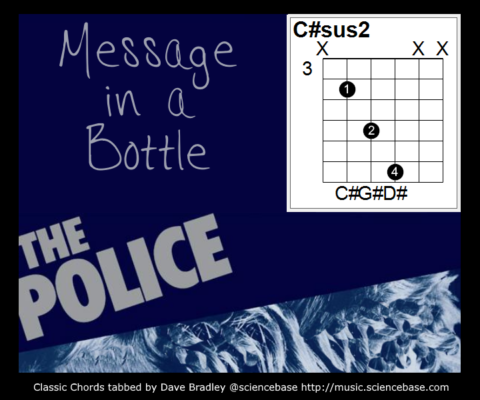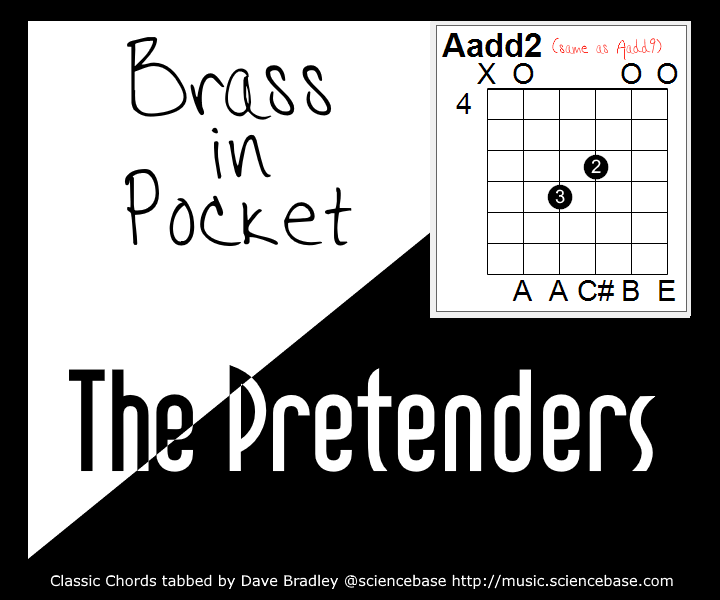For the 20th rock Classic Chord in the series, I thought I’d go for Brown Sugar by the Rolling Stones. Now, as you guitarists will mostly likely know, “Keef” (as in Keith Richards) does not play in standard EADGBE tuning, he (usually) plays in open G tuning, (D)GBDGD. The parentheses around his bottom string, because if I remember rightly he takes that string off to give him a more authentic Mississippi Delta sound than he’d get with that rumbling bass note.
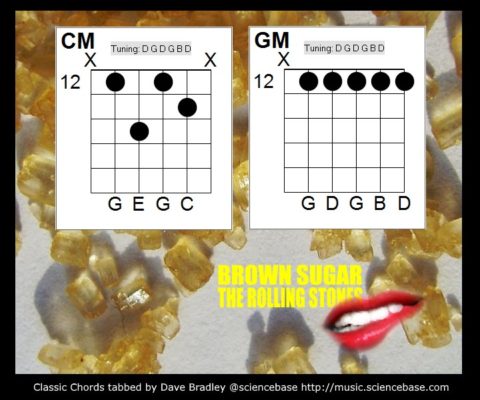
Anyway, in open G tuning, the opening chords to Brown Sugar sound so much better than the inefficient way many of us have played it in standard tuning over the years. It kicks off with a C and G chords at the 12th fret. Barre the five strings with the index finger at this fret and rapidly hammer-on as you hit the chord with second and third finger on frets 13 and 14 on the B string and the D string respectively to give the C (which looks like a 12th fret Am7 with the top string muted). A lift off those two fingers takes us back to the G, then you dash down the fret board to do roughly the same thing again at the fifth fret (shuttling C and F major with the same shapes) and then up and down again for a repeat of the whole measure. The second guitar flicks in the pentatonic fill, although you can squeeze that in on your own if you need to.
The second riff is then similar but at the 8th fret (G and D chords) then down to the 5th again. Then full barre of the five strings at fret 1 (A major) and then fret 3 (B major) and on to the 5th with the hammer/pulls as required. Have a listen to my rough-and-ready demo of the intro.
This style of playing open-G tuning and fretting chords without needing to use your pinkie seems to be the foundation of a lot of Keef’s harmonies. Ad lib a few things with these basic chords and you’ll end up stumbling upon several Stones’ riffs, Start me up, for instance.
Ironically though, Brown Sugar is a Mick jagger song written in standard tuning and given the Keef flavour with his open-G tuning, his picking style, his string muting, the bandana, the leathered and weathered skin, and the ubiquitous ciggie to make it all authentic when you see the band playing live. (Been there, done that, didn’t waste money on the tee-shirt, St James Park, Newcastle, 23rd June 1982).
Credits: Brown sugar crystals by Genesis12, lip-bite by Lucy Burrluck
